We’ve lately witnessed the ever-growing accessibility of mobile devices and the expansion of online shopping. So little wonder that the global eCommerce share of retail sales is projected to perpetually increase to 21.8% (equivalent to $6.388 trillion) by 2024. Concurrently, the demand for eCommerce website design is reported higher as well. To make those websites more accessible and intuitive to potential customer segments, a company necessarily looks for eCommerce website design services that are capable of meeting its requirements.
What Is an eCommerce Website?
In recent years, the advent of an eCommerce website has replaced the traditional role of emails and phone calls in commercial trades.
By definition, an eCommerce website is a virtual portal where transactions between purchasers and vendors take place electronically. The utilization of exchanging of information about products or services and payments has never been easier with a few simple clicks. Moreover, the appearance of the cloud algorithm allows computerizing and storing the database of involved participants and orders.
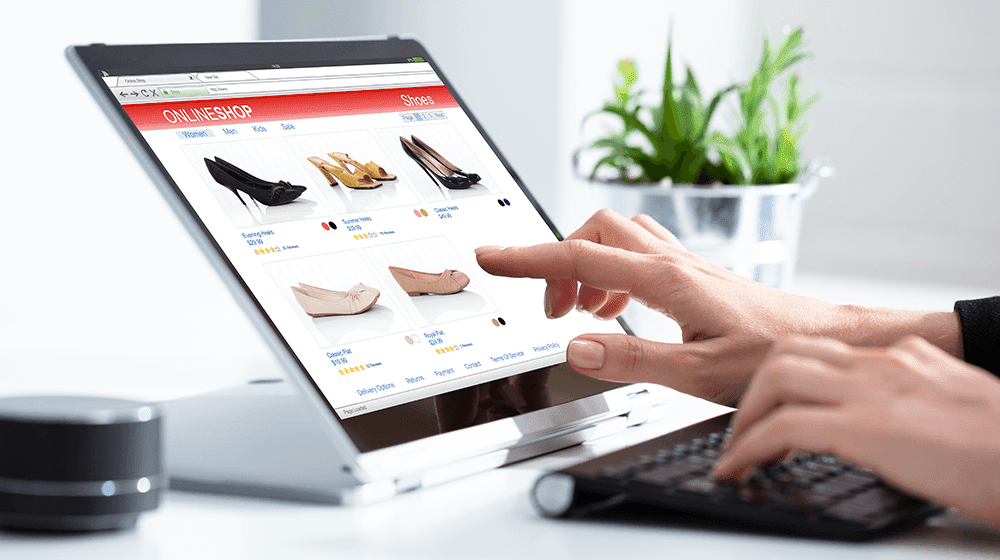
To build an eCommerce website effectively, a company should pay attention to specific functions the website will perform. Accordingly, an eCommerce website design model comes into four basic varieties as follows:
- Business-to-Consumer (B2C): Commercial transactions occur between companies and individual customers.
- Business-to-Business (B2B): Commercial transactions are conducted between companies.
- Consumer-to-Consumer (C2C): Commercial transactions take place between individual customers, normally on intermediary trading platforms such as eBay or Amazon.
- Consumer-to-Business (C2B): Commercial transactions occur when individual customers provide companies with goods and services.
Differences Between B2C and B2B Ecommerce Website Design
1. Customer intent
Customer intents, or underlying incentives behind purchase decisions of B2B and B2C shoppers, are different.
The implementation of B2B eCommerce website design is to prioritize companies whose buying decisions need to satisfy a group of different people. This takes those buyers a long time to list more detailed requirements for product assessment and thoroughly research such inputs. That’s why B2B e-tailers target top-of-the-funnel and middle-of-the-funnel leads. Those portals then strive to turn those prospective visitors to customers by using outbound (phone consultations or media buys) and inbound (content or paid search) marketing strategies.

Meanwhile, B2C purchasers act on feelings and personal demands. They revel in browsing around to compare product prices and features. Therefore, there will be a decrease in the average time for sales reps to approach customers. Also, the relationship with B2C vendors will be temporary when compared to B2B counterparts. Since B2C customer intent is driven by such cognitive motives as scarcity bias, promotions, social proof and more. That motivates B2C sites to adopt optimization tactics to boost conversion rates.
Recommended reading: Web Design: What It Is and Why It Matters?
2. Purchase process
The B2B purchase activities involve multiple stakeholders from distinctive departments, buying units, and even end-users. The ultimate goal of businesses isn’t to produce immediate sales, but rather to attract more leads. Therefore, respective eCommerce websites often embrace business-oriented content, marketing assets (e.g. videos, emails, etc.), and interactive tools to specify how products and services tally with such a clientele’s requirements.
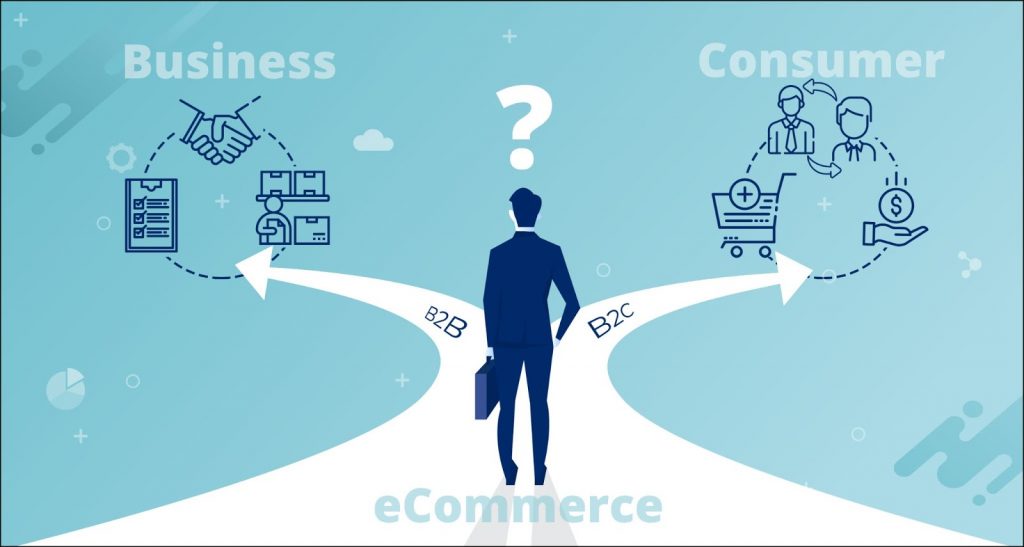
By contrast, the B2C eCommerce website design facilitates product exploration and a sense of urgency among individual customers. They may either snap up products believed as good deals or snatch something highly recommended by previous shoppers.
3. User experience
Both B2C and B2B trading platforms want to maximize user experience (UX). But this trait varies depending on the mentioned customer intent and buying procedure. According to Nielsen Norman Group, both types of sites work on five different UX specifications:
- B2B eCommerce website design should accompany more informative, diverse content to support a longer-term purchase process.
- B2B pricing mechanism is more complicated on grounds of product customization, diversity, and sheer volumes. Also, B2B products can be negotiated for favorable discounts.
- B2B contents must tailor to decision-makers and end-users.
- Information and regulatory requirements of B2B products must be clear enough so that purchasers can determine whether those goods are compatible with their existing workflows and systems.
- B2B e-tailers serve different business clients in terms of industry, scale, and operational budget. Thus, B2B site navigation must base on audience segmentation.
Advantages of Using BigCommerce for Designing a Site?

BigCommerce is a leading SaaS trading platform for small and medium enterprises (SMEs) to establish online stores, handle transactions and payments through the Internet. Already built-in functionalities of the cloud-based software facilitate the eCommerce website design process. Here are four major reasons why using BigCommerce to create a virtual store is a decent option:
1. Design isn’t compromised with other features
With the BigCommerce platform, you can set up an aesthetic website without fears of spoiling its functionality, security, and scalability. Regardless of whether you prefer a modest “building” or a lavish mansion, this versatile solution enables the customized back-end to suit core business functions and online operations. To do so, BigCommerce provides outstanding properties such as SEO-friendly codebase, reinforced data backup, scalable catalog API, and so forth.

In the client terminal, you can easily build an eCommerce website with a differentiated user interface. Storefront design tools including no-code page builder, attractive templates, and more will make your site more responsive and on-brand.
2. Many (very good) eCommerce themes
Provided the interior design is time-wasting for your taste, choosing among more than 150 available themes in the BigCommerce store is encouraged. All its templates are mobile-responsive, SEO-friendly, and easy to use. You can reference the best recommendations from the staff. Otherwise, you may narrow down your options by catalog types, grid layouts, and industry.
Recommended reading: How to Make Your Own Website With 5 Free & Effective Sites?
3. Customization opportunities
Functioning as an open-SaaS eCommerce platform, BigCommerce allows your online store to seamlessly connect with external applications (e.g. WordPress or Adobe Experience Management) through APIs and excellent data orchestration. Thereby, the platform will harmoniously get exposure to greater technical ecosystems.
Also, the eCommerce website design with BigCommerce uses the headless model. This setup separates the front-end from the back-end functionality. Thus, the server can be modified or updated without influencing the customer side’s performance.
4. Easy-to-use building tools
With little or no programming experience, you may rapidly create less sophisticated, but well-designed pages with Page Builder. This drag & drop editing tool, which incorporates premade design features, helps provide unique shopping experiences, updating quick changes and progressing digital marketing.
Top 5 eCommerce Website Design Companies

The commercial industry has gone through a massive digital transformation. Following the trend, your company needs to find the best eCommerce website design services to urgently approach potential customers. Among a myriad of candidates, five standout names are highly recommended by 10 Best Design based on client research, traffic ranking and other criteria:
1. Ruckus Marketing
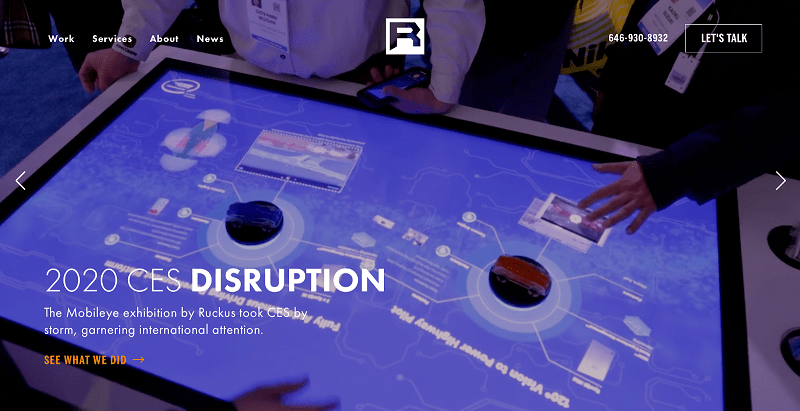
The leading eCommerce website design firm in this list is Ruckus Marketing. Its operation covers four important domains including branding, digital platforms, sales campaigns and photography. However, this New York-based company still earns the highest trust rating for web development and design.
Apart from large enterprises from different industries, typically BMW, Murad and Crayola, the company has also partnered with startups. Its expertise, coupled with branding and marketing strategies (e.g. SEO or SEM), helps your company develop a proper public image and spreads your brand story across the digital landscape. Moreover, Ruckus Marketing’s websites have intuitive and responsive UI/UX designs to optimize visitor interactions.
2. Big Drop Inc
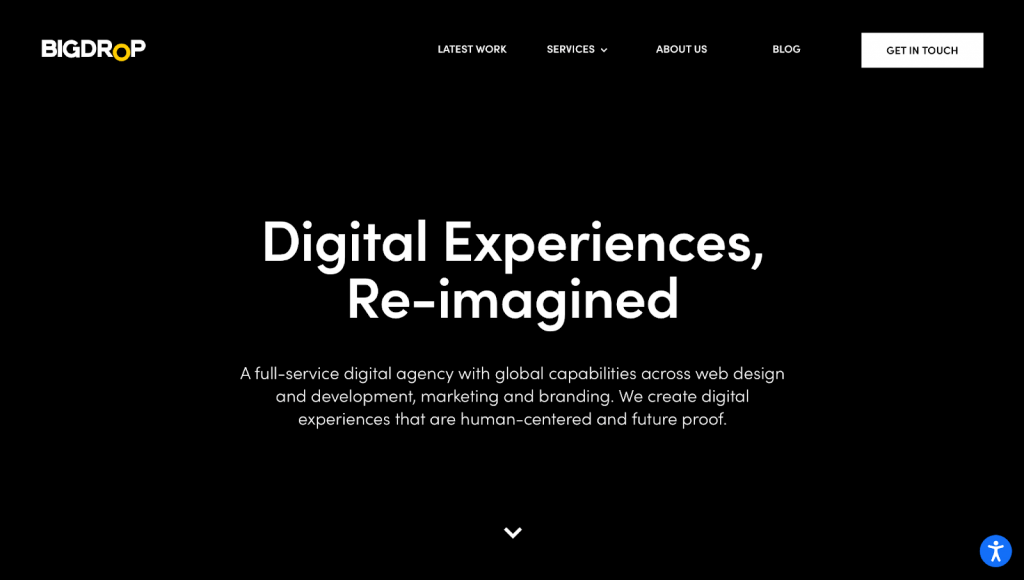
Big Drop Inc. has supported multiple merchants to increase their online presence on any technological device. By diving deep into their brands and industries, the company will construct a custom strategy and design for their virtual stores on open-source platforms. Of which, Magento Hosting is a key solution to activate and update those shops regularly.
Big Drop Inc. commits that its eCommerce domains meet the demands of the Payment Card Industry Data Security Standard to guarantee financial security and reliability through payment gateways. Concurrently, online stores are obliged to use payout solutions (e.g. PayPal or Apple Pay) that fulfill security requirements of the PCI DSS and other equivalent regulations.
Recommended reading: What is B2B Ecommerce? All You Need to Know about B2B Ecommerce
3. Use All Five
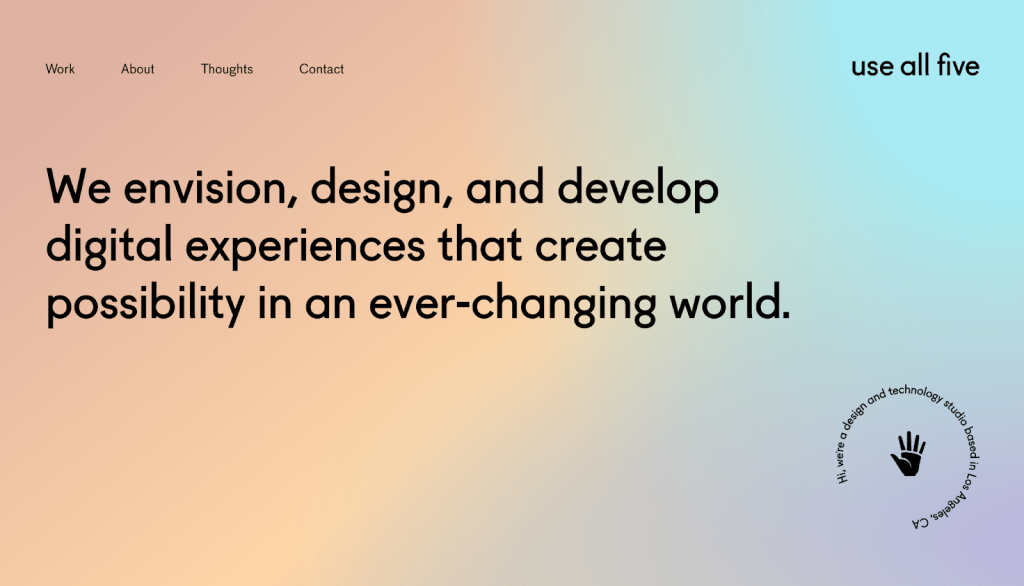
Since its foundation in 2016, Use All Five has worked toward digital experiences and products that encourage imagination and actions among potential buyers. Featured clients, including Art Of Sport, Guy Fieri and Sunset Market Plaza, come to Use All Five because the company can give them innovative solutions to keep up with the fast-paced business world and stay ahead of the news.
4. Lounge Lizard
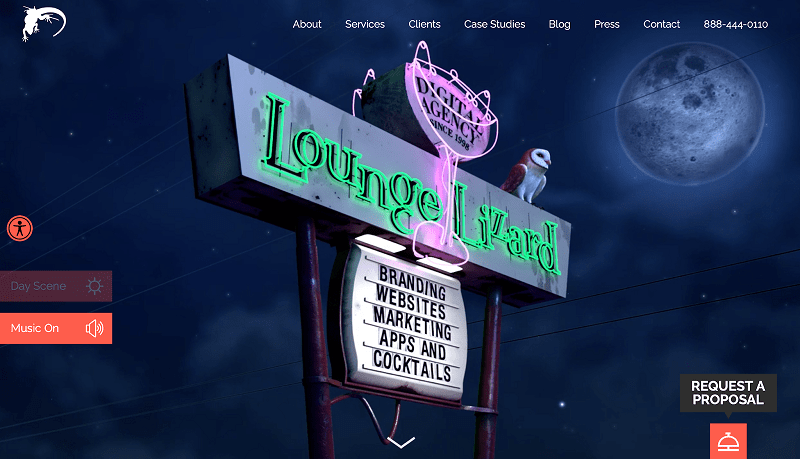
Lounge Lizard offers exceptional eCommerce website design services that help your online store close more sales deals and enhance ROI. Besides intuitive UI/UX design, fast page speeds and mobile compatibility, your eCommerce website will also include back-end SEO tools and management dashboards and third-party optimization software.
Over more than 20 years of operation, Lounge Lizard has gained excellent credentials such as Google Analytics Certified, Facebook Blueprint Certification and more. Therefore, it wins trust from institutional clients of all kinds and records a 99% retention rate.
5. SPINX Digital

SPINX Digital’s expertise covers eCommerce development, enterprise CMS solutions, and online marketing strategies (e.g. social media, video production, or SEO). To develop a differentiated eCommerce website that matches the merchant’s demands, the company learns about the brand and respective industry at first. Conversations between development teams and key stakeholders will help decide to choose the suitable strategic architecture, UI design style, and technology. Further, SPINX Digital can boost the website to a higher level with effective digital marketing solutions.
The post 5 Best eCommerce Website Design Services for Success appeared first on Designveloper.
August 08, 2022 at 11:00AM













No comments:
Post a Comment